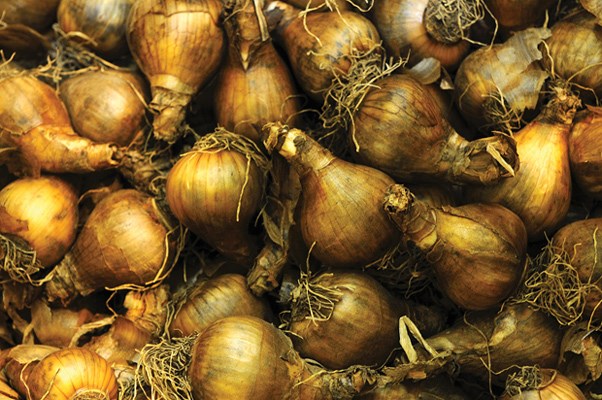THE irony of fall is that you have to think about spring. And with the start of fall only days away, it's time to start planting bulbs for spring.
The common large flowered tulips and daffodils are the easiest to plant for the beginner. To naturalize those bulbs into the garden, choose the garden bed you want to plant and locate the open spaces in the bed with enough room to accommodate bulbs.
Bulbs don't need much room to flourish, about 30 to 60 centimetres in width and relatively root-free soil. Space the planting holes amongst trees, shrubs and perennials.
Be sure that your bulbs can be seen from the outside of the bed. Once you choose the planting locations, place some sticks or other markers into those locations to mark the planting placements and stand back to look at your planting placement to determine if the coverage will be spaced to cover the entire visual space of the bed.
It is not necessary to cover the entire bed with bulb planting locations, especially if cost is an issue. Even a few well-placed bulb groupings at the front of the bed can add colour and charm to the garden.
There are no rules on how far apart naturalized bulb plantings should be spaced.
It is really a matter of taste and most importantly, the bulbs should look natural not regimented.
For big splashes of colour plant the bulbs in groups of 11-15 bulbs per planting hole, but even smaller groups of five to seven bulbs look charming.
To plant naturalized daffodils, dig with a shovel and create a planting hole that has straight sides about 15 cm deep with a diameter that will accommodate at least 5 cm of open space between each bulb. Crowding the bulbs in closer doesn't allow enough room for bulb root growth and the flower heads that push up in spring will push each other over, causing the whole display to fall.
Once you have created the planting hole, place your bulbs with the pointed side up, into the prepared planting hole and space them out.
Once the bulbs are placed, gently fill back in with soil, being careful not to knock over the bulbs and gently, using half or less of your body's weight, compress the soil. Do not stomp or excessively compress the soil or you will compress the air out of the soil, which suffocates the bulbs.
Mulch the surface, mark the planting hole with a small label so you don't accidentally dig them up later, and water in the bulbs. Spring bulbs need some sun to bloom which does not mean they have to be planted in full sun but they won't last the years and naturalize in dark shade.
This year I will be working with students to plant 10,000 daffodils and crocus into the lawn in front of the UBC Botanical Garden as the first phase of a longer term project to naturalize the lawn with colourful spring flowering bulbs. I highly recommend that if you have a lawn that you naturalize some crocus or daffodils into the lawn.
The effect is quite stunning and lasts for years. For lawn naturalization, choose bulbs that flower early from late February to March so they will be finished flowering before the lawn requires cutting. Smaller crocus, daffodils and species tulips are best suited to lawn naturalization because the taller bulbs are too hard to cut with the lawn mower. To plant bulbs in the lawn, cut a hole into the lawn, keep the piece of grass intact, set it aside, and then plant your bulbs two or three per hole. When you're finished planting, place the piece of grass back onto the surface and water in and you're done. After your bulbs have bloomed, delay grass cutting enough to allow the bulbs to retract energy for the next season's bloom.
On the issue of adding fertilizer or bone meal to bulb planting hole, my experience has taught me that if the soil is reasonably good, drains well and looks earthy light brown to dark brown, then no fertilizer is needed.
Most gardens have reasonably good soil and enough phosphorus (bone meal) present in the soil, so don't kill your bulbs with kindness.
If you do feel the need to feed, then add one small teaspoon only of bone meal for each group of 15 bulbs, evenly mixed into the soil below the bulbs, which would be enough phosphorus to last 10 years.
Fertilizing bulbs is unnecessary and it's unhealthy to force bulbs to grow soft tissue, which predisposes them to pests and diseases.
Remember: dig deep, plant many and enjoy the colour next year.
Todd Major is a journeyman horticulturist and chief horticultural instructor at the University of British Columbia Botanical Garden. For advice contact him at [email protected].



